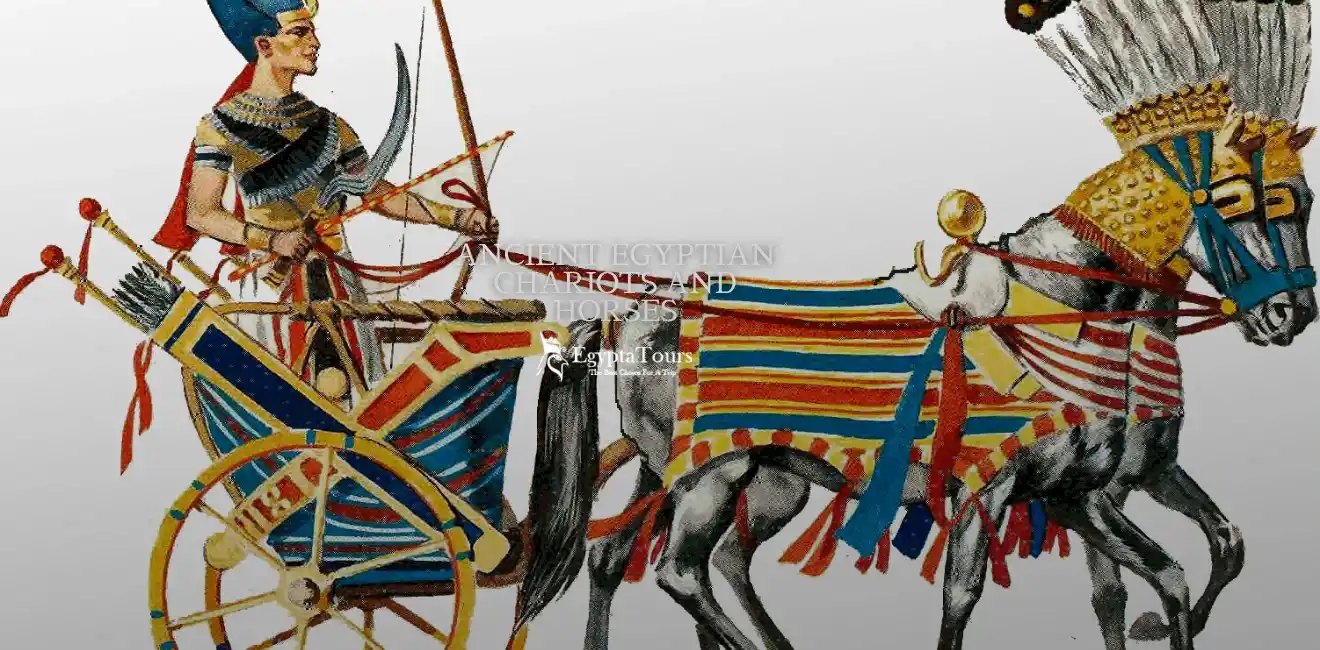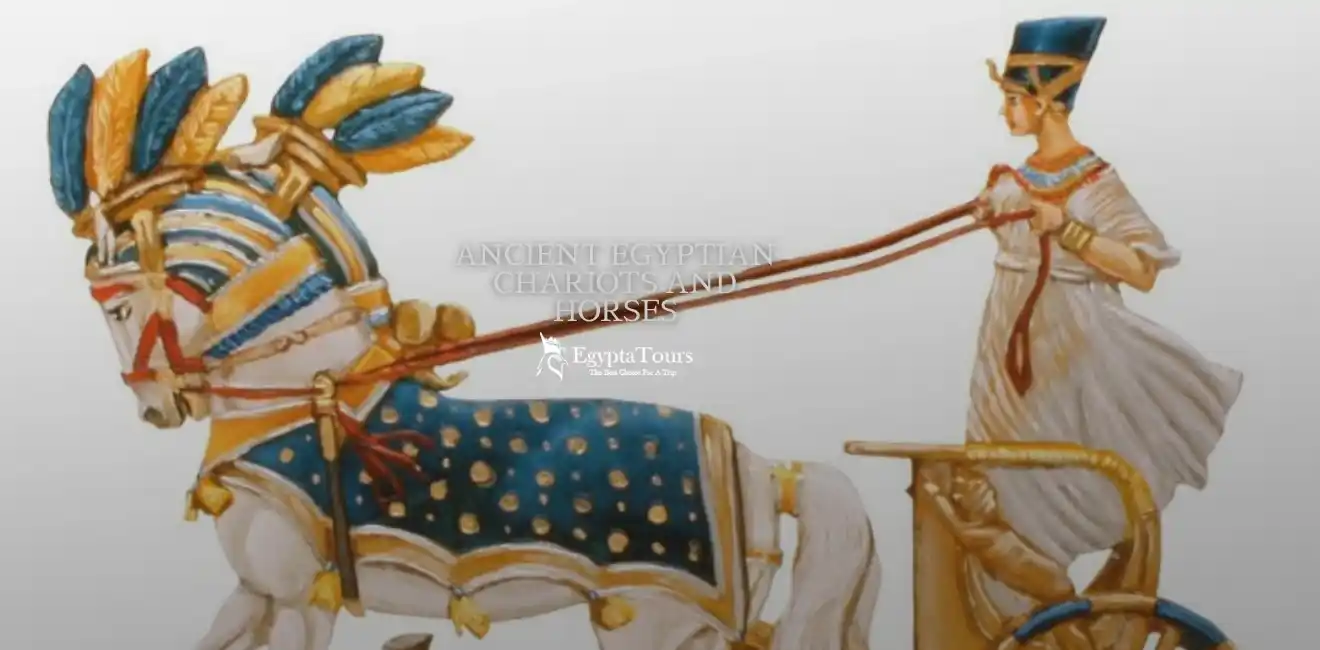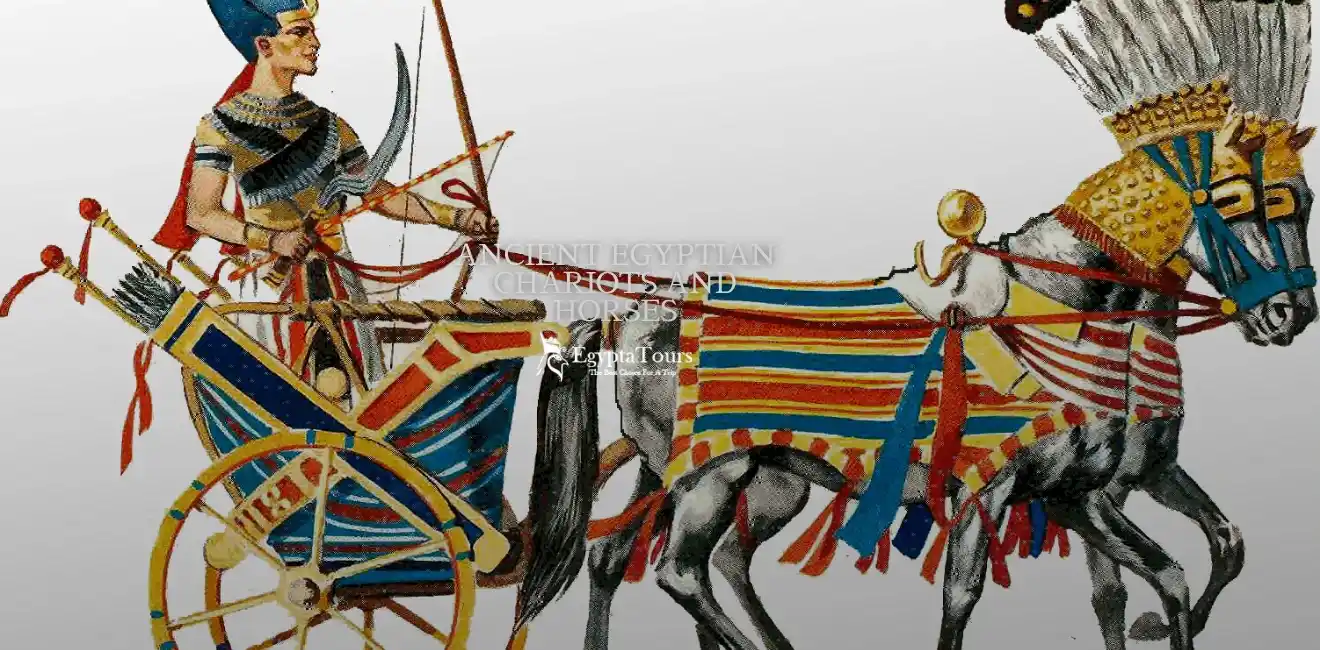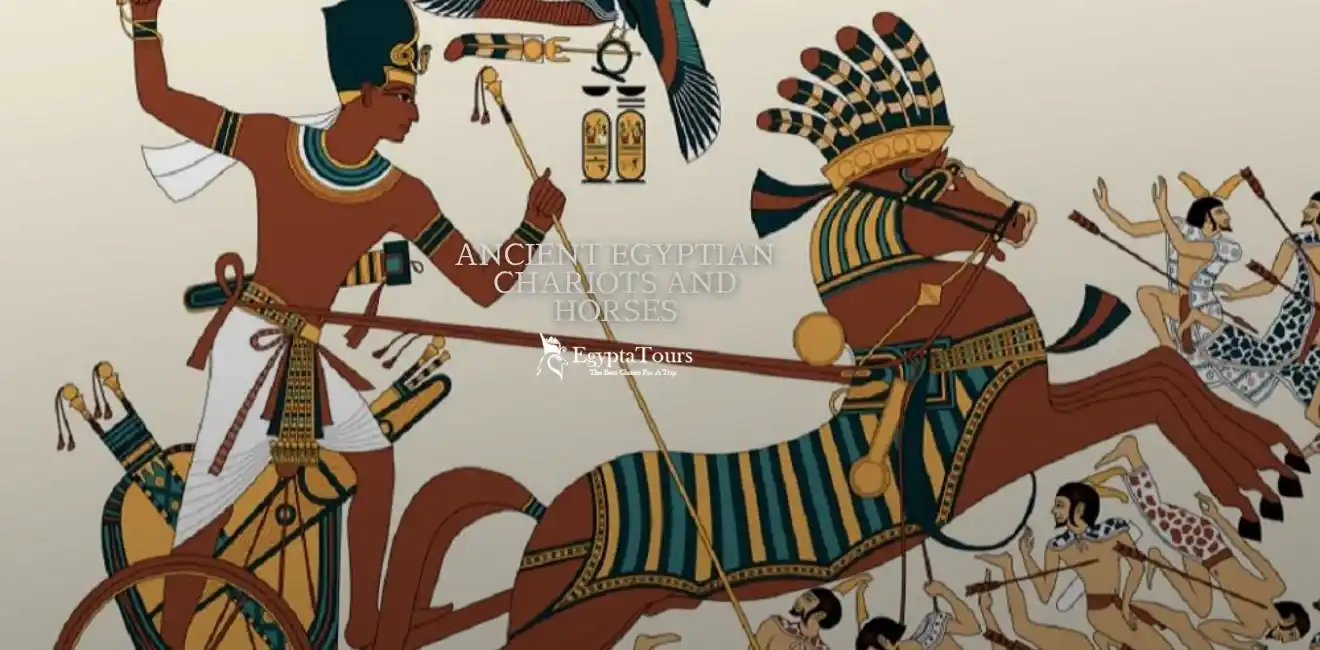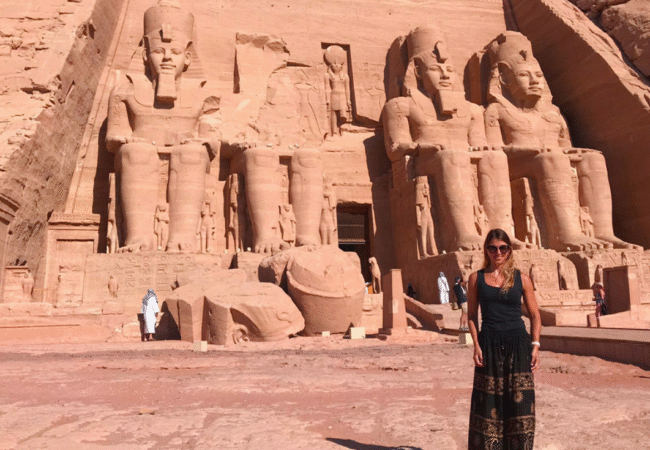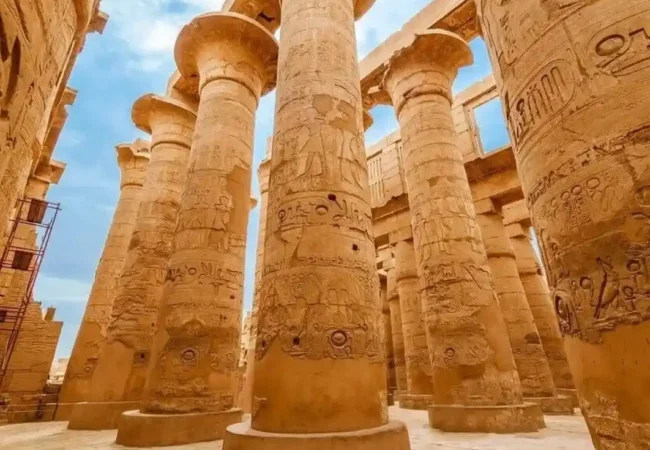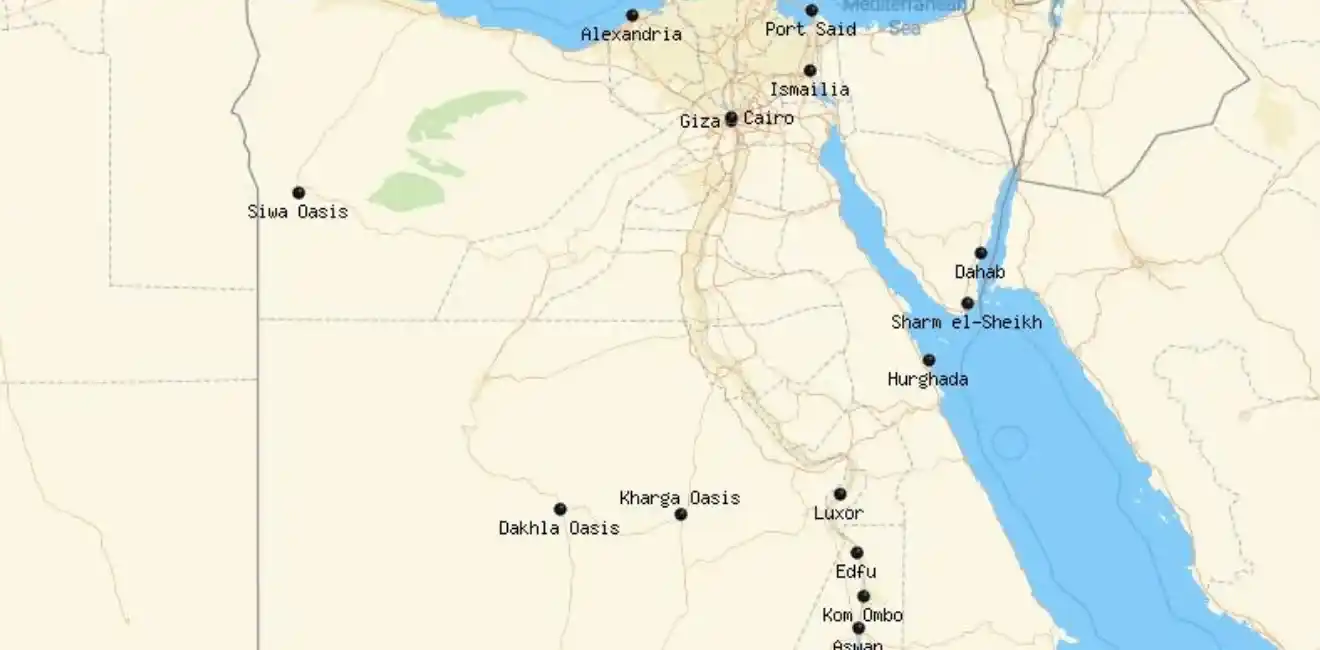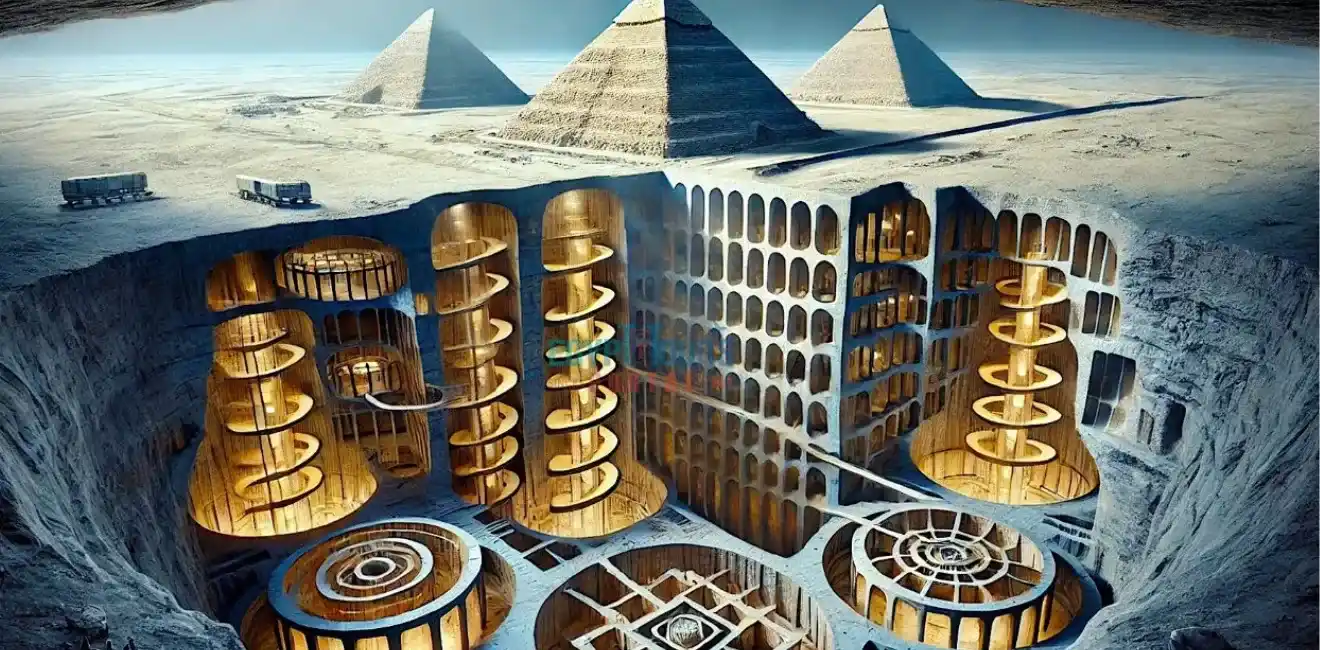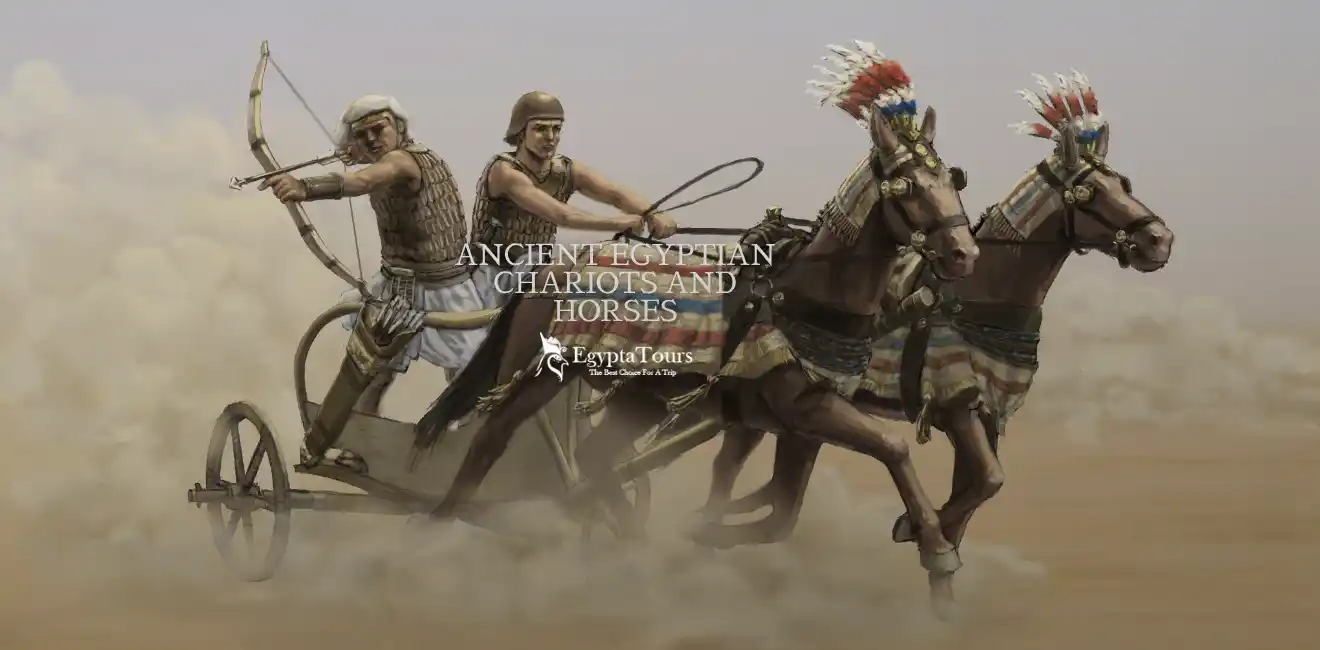
Ancient Egyptian Chariots and Horses
In the ancient world, few innovations were as transformative as the chariot. One of the most iconic features of Egyptian military prowess, the chariot, became a symbol of both power and prestige.
Ancient Egyptian chariots and horses played a pivotal role in warfare, ceremonial events, and royal processes.
They revolutionized battle tactics and left an indelible mark on Egyptian society, as well as the wider world. In this article, we will explore how these magnificent machines and their equine companions shaped the ancient Egyptian civilization.
The earliest evidence of the use of chariots dates back to the Mesopotamian civilizations of the third millennium BC where primitive chariots pulled by oxen were used for warfare.
However the advanced use of chariots was most influential with the Hyksos who brought this advanced technology to Egypt during the late Middle Kingdom.
The chariots introduced by the Hyksos were characterized by their light weight and wire wheels, which gave them greater speed and maneuverability in warfare.
After the Hyksos were expelled from Egypt, the Egyptians greatly developed these chariots during the New Kingdom, becoming an important part of their military strategies as demonstrated in prominent battles such as the Battle of Kadesh.
What was the main purpose of chariots in ancient Egypt?
Ancient Egypt witnessed remarkable military development during the New Kingdom. One of the most notable innovations of this development was the use of war chariots which played a vital role in reshaping the balance of power both within and beyond Egypt’s borders.
The purpose of chariots was not simply a means of rapid transportation; they were an effective and influential military tool that enabled the Egyptian army to launch attacks and defend the country with great efficiency.
Chariots were used on the battlefield to transport soldiers and archers. Each chariot was driven by a driver while a soldier stood beside him carrying a bow and arrows. This formation allowed soldiers to move quickly across the battlefield and strike targets with precision making a significant difference in war tactics.
These chariots were a symbol of military superiority and royal prestige and a sign of the sophistication of military thought and administrative organization in ancient Egypt.
The pharaohs derived from these chariots the image of the victorious leader leading his troops from the front, a direct embodiment of the idea of the “warrior king”.
Reliefs and murals from battles such as Kadesh (fought By <strong>Ramesses II</strong>) reveal how chariots were an integral part of military and political doctrine. This allows us to understand how the tools of war blended with religious symbols to form a cohesive image of power and order in ancient Egypt.
The Role of Chariots in Ancient Egypt
Chariots were not just tools of warfare; they were also symbols of status and strength. Initially introduced to Egypt from neighboring cultures, chariots became integral to the Egyptian military strategy. The primary role of the chariot was to provide a swift means of transport for archers and soldiers, allowing them to move quickly across the battlefield.
It was also used for ceremonial purposes, often seen in royal processions and temple offerings.
Early Development of Chariots
Chariots first appeared in Egypt during the New Kingdom period (circa 1550–1070 BCE), heavily influenced by the Hyksos, who ruled over Egypt for a time. However, it wasn’t long before the Egyptians adapted the chariot to suit their needs. The Hittites, who were contemporaries of the Egyptians, also had an influence, as they were known for their chariotry.
Over time, Egyptian chariots evolved in both design and functionality.
Design and Structure of Egyptian Chariots
Ancient Egyptian chariots were lightweight, fast, and designed for speed and agility rather than durability. These vehicles were typically made from wood, reinforced with leather, and often adorned with intricate carvings or metal inlays to showcase the wealth and power of the owner.
Chariot Construction Techniques
Crafting a chariot was no small feat. Skilled artisans, known as chariot makers, would spend weeks constructing each chariot. The wooden frame was carefully carved and shaped, while the wheels were reinforced with metal to withstand the pressures of battle. Chariots were often painted with bright colors, depicting royal symbols and Egyptian deities, giving them both functional and ceremonial significance.
Horses in Ancient Egypt
While chariots were a key feature of ancient Egyptian warfare, the horses that pulled them were just as important. Horses were first introduced to Egypt from the Near East and were initially used in chariotry, hunting, and ceremonial events.
Training and Care of Horses
Egyptians were skilled in the art of horse training. Training these horses was a rigorous process that involved teaching them to pull chariots at high speeds, navigate rough terrain, and respond to the commands of their riders.
The horses were also well cared for, with stables constructed to keep them healthy and well-fed. Veterinary practices were advanced for the time, and the Egyptians had a deep respect for the animals they relied on.
The Use of Chariots in Warfare
The role of chariots in warfare cannot be overstated. The Egyptians utilized them in some of their most famous battles, such as the Battle of Kadesh (1274 BCE), where the Egyptian pharaoh Ramesses II faced off against the Hittites. Chariots provided a significant advantage, as they allowed the pharaoh’s forces to strike quickly and retreat just as swiftly.
Chariots and Royalty
Beyond their military application, chariots were also symbolic of royal power. They were used in elaborate ceremonial events, such as the coronation of pharaohs or the celebration of military victories. Chariots were often depicted in Egyptian art and were believed to have divine connections, serving as a connection between the gods and the rulers.
The Decline of Chariots in Egypt
Over time, the use of chariots began to decline, particularly with the rise of cavalry and infantry. As military tactics evolved, chariots were no longer as effective in battle. They were eventually phased out as cavalry units became more prevalent, particularly during the Ptolemaic period when horse-mounted soldiers took center stage.
Legacy of Egyptian Chariots and Horses
Despite their decline, the legacy of Egyptian chariots and horses lived on. Their influence can be seen in the chariotry of later civilizations, such as the Greeks and Romans. The iconic image of the Egyptian chariot still captures the imagination of people today, symbolizing both the military might and the elegance of this ancient civilization.
Conclusion
Ancient Egyptian chariots and horses are among the most fascinating aspects of ancient Egyptian civilization. They were integral to Egypt’s military successes, ceremonial events, and royal grandeur. While chariots eventually declined, their legacy lives on, inspiring future generations and civilizations. These powerful symbols of speed, power, and prestige will forever remain iconic in the history of Egypt
Frequently Asked Questions (FAQs)
1. What was the primary purpose of chariots in Ancient Egypt?
Chariots in Ancient Egypt were primarily used in warfare, allowing soldiers to move quickly on the battlefield. They were also used in ceremonial and royal processions to signify power and prestige.
2. How were horses trained in Ancient Egypt?
Horses were trained to pull chariots, follow commands, and endure the stresses of battle. The training was rigorous, and horses were well-cared for with special stables and veterinary care.
3. Did chariots have a ceremonial use?
Yes, chariots were often used in royal ceremonies, processions, and celebrations. They were also depicted in Egyptian art and symbolism, signifying the pharaoh’s divine right to rule.
4. Were horses native to Egypt?
No, horses were introduced to Egypt from the Near East, around the time of the Hyksos invasion. They quickly became an integral part of Egyptian military and royal life.
5. How did Egyptians build their chariots?
Egyptians used skilled artisans to craft chariots from wood, leather, and metal. The chariots were lightweight and designed for speed, often adorned with elaborate decorations.
6. How did chariots impact Egyptian warfare?
Chariots gave the Egyptians a tactical advantage in battle, allowing for swift movements, surprise attacks, and rapid retreats. They were a key feature in famous battles like the Battle of Kadesh.







